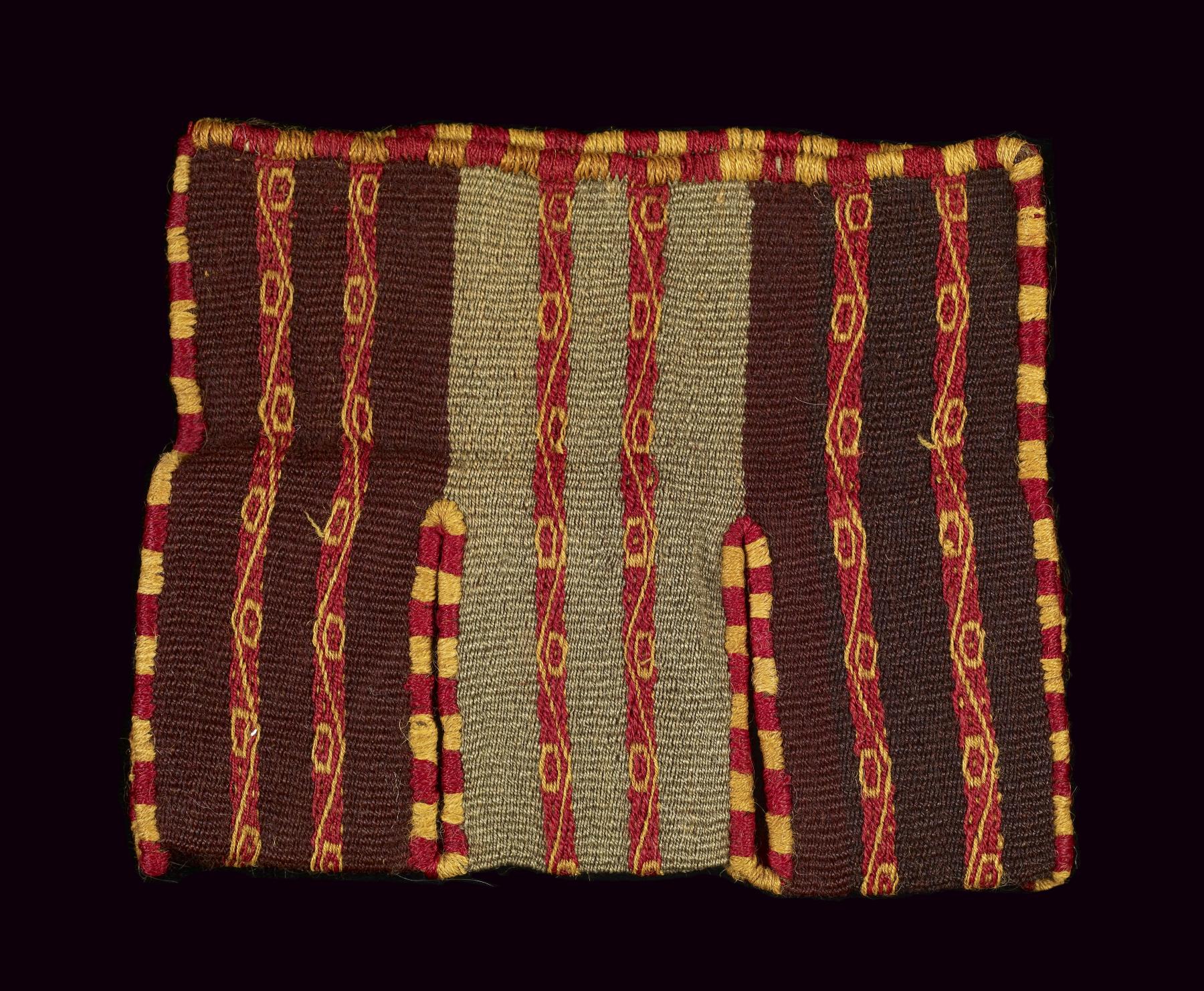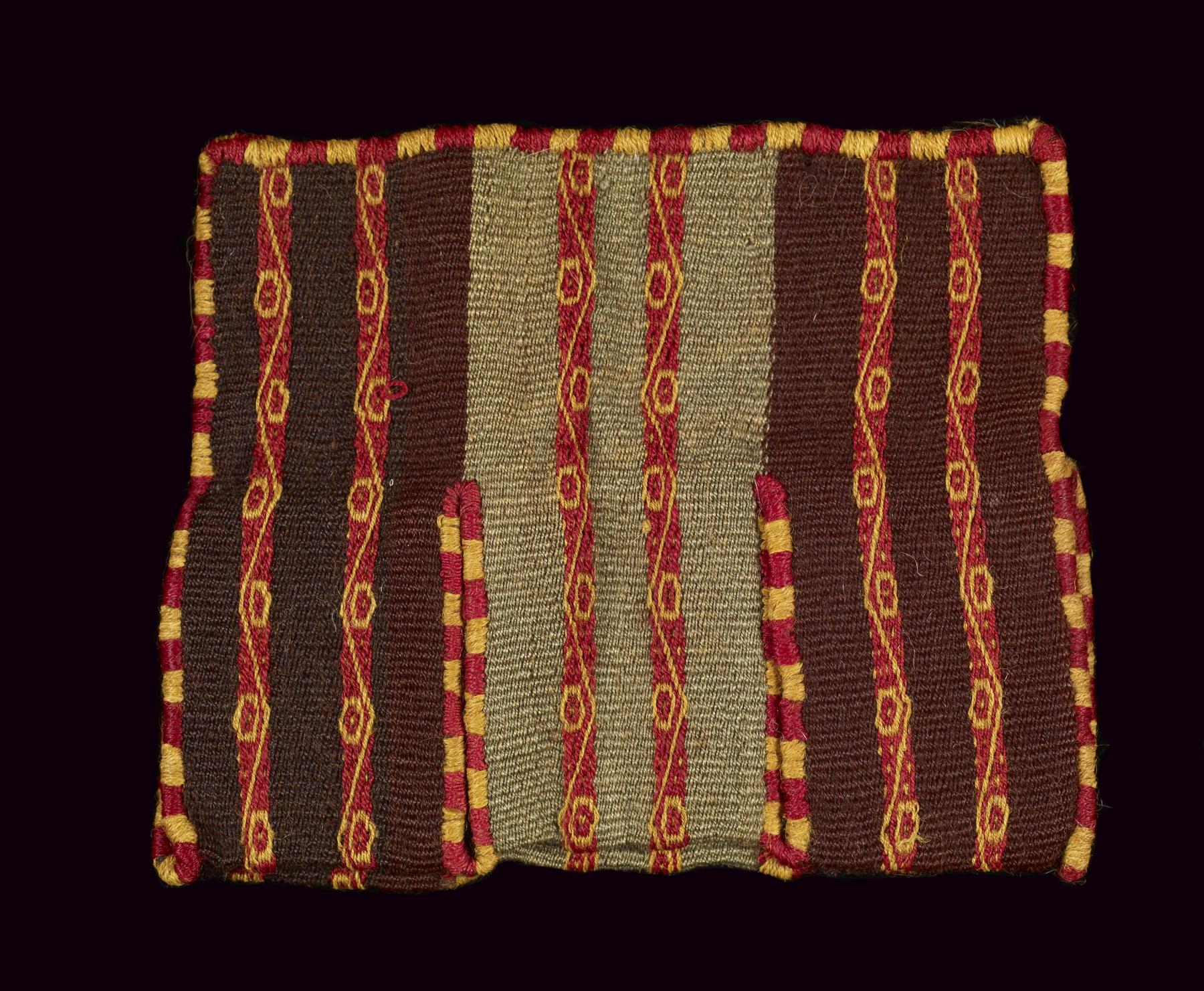"Ch'uspa" (Coca Leaf Bag)
(Ancient Americas )
This piece, with no figurative imagery, is similar to Aymara textiles of Bolivia, which are often dominated by the contrast of broad and narrow stripes across traditional tunics and other garments. This piece clearly highlights its functional use: the heighten the hunger-dulling and anti-fatigue effects of the coca leaves, they are often chewed with a bit of llipta, a mixture of lime (calcium carbonate) and ash, which may be stored with leaves in a separate pocket of the ch'uspa. As this pouch is divided into three compartments, it could have held both materials easily. When the owner felt tired, he could wrap leaves around the lime and put the bundle into his cheek. Over time, enzymes in his saliva would help the coca's narcotic compounds to be slowly released.
Provenance
Provenance (from the French provenir, 'to come from/forth') is the chronology of the ownership, custody, or location of a historical object. Learn more about provenance at the Walters.
Purchased by Georgia de Havenon, New York; given to Walters Art Museum, 2016.
Geographies
Bolivia
(Place of Origin)
Peru (Place of Origin)
Measurements
Overall: L: 6 1/2 × W: 5 1/8 in. (16.5 × 13 cm)
Credit Line
Gift of Georgia and Michael de Havenon, 2016
Location in Museum
Not on view
Accession Number
In libraries, galleries, museums, and archives, an accession number is a unique identifier assigned to each object in the collection.
In libraries, galleries, museums, and archives, an accession number is a unique identifier assigned to each object in the collection.
2011.20.17




